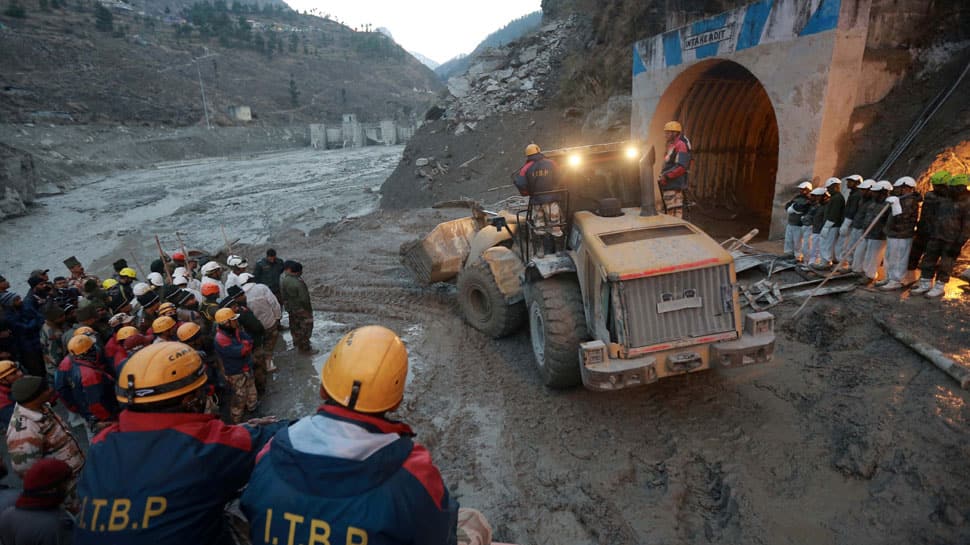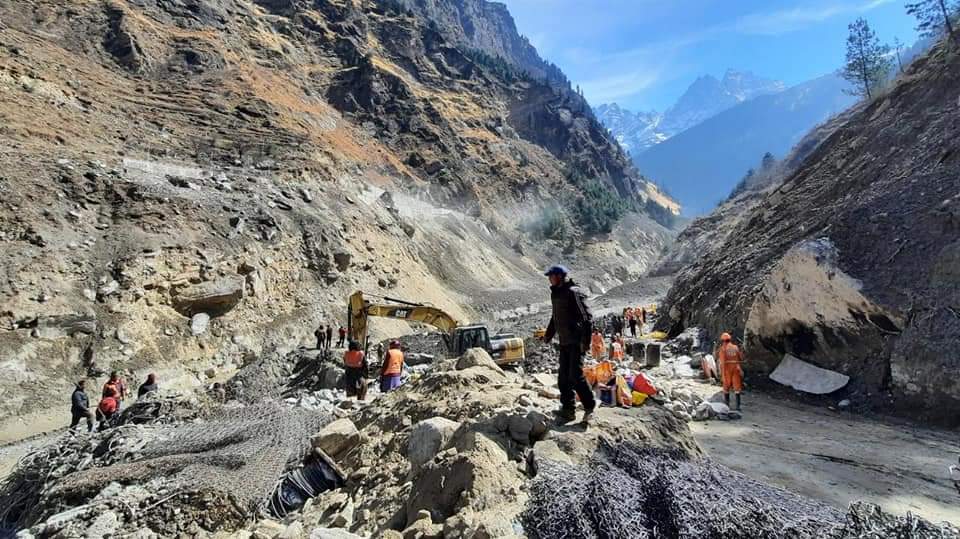On February 7 morning, citizens of the country saw devastating visuals on social media of a massive ball of what seemed like ice and dust, along with floodwaters in Chamoli district. It made its way downstream with ferocious speed, washing away houses, trees, temples and power projects that came in its way.
A study released yesterday, June 10, in the Science journal, has informed that a massive rock and glacier ice that collapsed from the steep north face of Ronti Peak in Uttarakhand led to the Chamoli disaster on February 7.
The research study titled: ‘A massive rock and ice avalanche caused the 2021 disaster at Chamoli, Indian Himalaya’, used satellite imagery, seismic records, numerical model results, and eyewitness videos to arrive at this conclusion.

February is a lean season and flash floods are mostly limited to the pre-monsoon and monsoon seasons when cloudburst events or heavy rainfall make the Himalayan rivers rise, leading to floods. The June 2013 Uttarakhand disaster is a classic example of this.
However, the February 2021 disaster in Chamoli, which killed over 200 people, mostly labourers (many still missing and believed to be dead) led to speculation over what caused the incident. The impact of the disaster was so bad that two under-construction hydro power projects were washed away.
Recreating disaster
According to the authors of the study, “On 7 Feb 2021, a massive rock and ice avalanche from the 6063 m-high Ronti Peak generated a cascade of events that caused more than 200 deaths or missing persons, as well as damage or destruction of infrastructure, that most notably included two hydropower projects in the Rishiganga and Dhauliganga valleys.”
The study points out that at around 10.21 am on February 7, a huge portion of rock and ice detached from the steep north face of Ronti Peak at an elevation of about 5,500 metres above seal level (m asl), and impacted the Ronti Gad (‘gad’ means rivulet) valley floor about 1,800 m below.
The collapsed mass comprised 80 per cent rock and 20 per cent glacier ice by volume, and may have become airborne for a short period during its initial descent.
After the rock and ice avalanche impacted the valley floor, most of it moved downvalley in a northwesterly direction, inform the researchers. Frictional heating of the ice in the avalanche generated water, leading to flash floods with a flow consisting of sediment, water and blocks of ice.

It is claimed that nearly all (190) of the 204 people either killed or missing in the disaster were workers at the Rishiganga (13.2 MW) and Tapovan (520 MW) project sites. Direct economic losses from damage to the two hydropower structures alone are over 223 million USD, notes the recent study.
The high loss of human life and infrastructure damage was due to the debris flow, and not the initial rock and ice avalanche, point out the researchers.
Gaon Connection has been reporting on the Chamoli disaster and the devastation caused by it and the fear it had unleashed among the local villagers who were scared of returning to their homes.
Residents of villages as far away as in Chenab valley of Jammu and Kashmir were having sleepless nights due to the Chamoli disaster as a large number of hydro power projects are coming up in the union territory too. Similar fears were echoed by villagers of Himachal Pradesh’s Lahaul and Spiti where such projects have been proposed.
Climate change to blame?
Researchers of the recent study point out that “although we cannot attribute this individual disaster specifically to climate change, the possibly increasing frequency of high-mountain slope instabilities can likely be related to observed atmospheric warming and corresponding long-term changes in cryospheric conditions (glaciers, permafrost)”.
According to them, multiple factors have contributed to the Chamoli rock and ice avalanche, including the geologic structure and steep topography, possible long-term thermal disturbances in permafrost (ground that remains completely frozen) bedrock induced by atmospheric warming, stress changes due to the decline and collapse of adjacent and overlying glaciers, and enhanced melt water infiltration during warm periods.
However, the authors also highlight that the recent Chamoli disaster tragically revealed the risks associated with the rapid expansion of hydropower infrastructure into increasingly unstable territory.
Another recent analysis by the Council on Energy, Environment and Water (CEEW India), a New Delhi-based think tank, showed how vulnerable Uttarakhand is to climatic changes. The state has recorded an increase in both extreme floods and droughts in the last five decades.

The CEEW India analysis shows that since 1970, there has been a four-fold increase in extreme flood events in Uttarakhand. A similar increase in associated events such as landslides, cloud bursts and glacial lake outbursts has been recorded. Chamoli, Haridwar, Nainital, Pithoragarh and Uttarkashi districts are most vulnerable to extreme floods, it noted.
The think-tank’s analysis also found a two-fold increase in droughts in Uttarakhand the state since 1970. Over 69 per cent districts in the state are now drought-prone, it warned. In the last decade, floods and droughts occurred simultaneously in Almora, Nainital and Pithoragarh districts. This further complicates risk-informed decision-making for policymakers and response teams, said the think tank.
Also Read: Uttarakhand: The Himalayan state is besieged by extreme floods and increased droughts
According to the researchers of the recent study published in Science, “enhancing inclusive dialogues among governments, local stakeholders and communities, private sector, and the scientific community could help assess, minimize, and prepare for existing risks.”
The disaster indicates that the long-term sustainability of planned hydroelectric power projects must account for both current and future social and environmental conditions, while mitigating risks to infrastructure, personnel, and downstream communities, noted the study.
Already, a large number of scientific studies point towards receding glaciers in the Hindu Kush Himalayan region that stretches over 3,500 kilometres across eight countries — Afghanistan, Bangladesh, Bhutan, China, India, Nepal, Myanmar and Pakistan — and is also known as the ‘water tower’ of the world.
Increasing disasters aside, there is also a high risk to water security of the region, whose rivers support 1.3 billion people living in the mountains and downstream.



















